Indiana Jones taught us some important life lessons. Exploring the world is an enriching experience, the past should be preserved and studied, and best of all, it’s perfectly okay to punch Nazis in the face.
The Indiana Jones franchise is a multimedia juggernaut, with television shows, comic books and books all supplementing the four movies (and one more on the way). Video games are just another facet to the franchise, so we’ve globetrotted our way around the world (from the comfort of our offices) to bring you the very best Indiana Jones games.
The Best Indiana Jones Games
10. Indiana Jones and the Fate of Atlantis: The Action Game

Developer: Attention to Detail
Publisher: LucasArts
Platform(s): PC
Stop right there. Put down your pitchforks, it’s going to be okay. Indiana Jones and the Fate of Atlantis has the reputation of being a classic adventure game for LucasArts, but this isn’t the same game. The Indiana Jones movie series straddled the action and adventure genres since the first entry, but video games were still very much in their infancy at the time, and it was rare that games did both action and adventure in equal measure.
LucasArts’ solution was to make separate games: adventure puzzle games for those that loved the story, and action games for those who wanted to run around and punch Nazis. As you can probably guess, Indiana Jones and the Fate of Atlantis: The Action Game is the action game version. Its gameplay is from an isometric perspective and sees Indy battling his way through.
Certainly a unique take on Indy, Indiana Jones and the Fate of Atlantis: The Action Game looked different to other action games of the era, many of which (including other Indiana Jones games) chose the platformer as their action genre of choice. With LucasArts outsourcing development to British company Attention to Detail, Indiana Jones and the Fate of Atlantis: The Action Game was quickly forgotten and today only serves as an interesting footnote on the record of Indiana Jones and the Fate of Atlantis: The Graphic Adventure.
9. Indiana Jones and the Staff of Kings

Developer: Artificial Mind and Movement
Publisher: LucasArts
Platform(s): PS2, Wii, PSP, DS
Anyone remember that super cool Indiana Jones E3 trailer from 2006? The one that showed the amazing ragdoll and physics as well as a brilliant action sequence on a San Francisco cable tram? No? Well, that’s because this PS3 and Xbox 360 prototype demo was ultimately cancelled and worked into Indiana Jones and the Staff of Kings, released lower end Wii, PSP, Nintendo DS and PS2.
As you should expect from an Indiana Jones game, you’ll find yourself globe trotting around the world, visiting locations such as Panama, Istanbul and Nepal. Indiana Jones and the Staff of Kings has varied locations, and despite being on weaker hardware, it has some nice graphical touches. However, with the Wii selling as well as it did, and being cheaper to develop for, it became the main platform for development. This too meant one thing: motion controls.
While the Wii proved that motion controls can really enhance a game if done correctly, it also showed that when done badly, they’re bloody awful. Despite Indana Jones seemingly being ideal for this sort of motion control fun, Indiana Jones and the Staff of Kings’ controls were awkward, overused and, frankly, stupid. But there is the PS2 version to check out, so all is not lost here.
8. Indiana Jones and the Last Crusade: The Action Game

Developer: Tiertex Design Studios
Publisher: U.S. Gold
Platform(s): Various
LucasArts’ first attempt at a single property split into separate action and adventure games was the video game adaptation of the 1989 movie Indiana Jones and the Last Crusade. Indiana Jones and the Last Crusade: The Action Game is a hard game to rank, due to it having so many ports. The Amiga, Atari, Commodore 64, NES, Master System, Spectrum, Amstrad and PC all had versions of this game, and while they are all similar in style, they do vary in quality.
What all the games have in common, though, is that they are side scrolling, platforming affairs, and each version is fairly similar, although some games do have levels missing. Each level is based on a part of the game, with the Cross of Coronado, the circus train, Castle Brunweld and the Grail caves all getting their own levels.
The sprites are nice and large in most versions, which is unusual for games of this era, most versions sound great, although some versions do have limited sound in the levels themselves, and often are totally silent aside from the odd sound effect. Despite this, it’s a great early action title for the series and one of the first platform games in the series.
7. Indiana Jones and the Temple of Doom
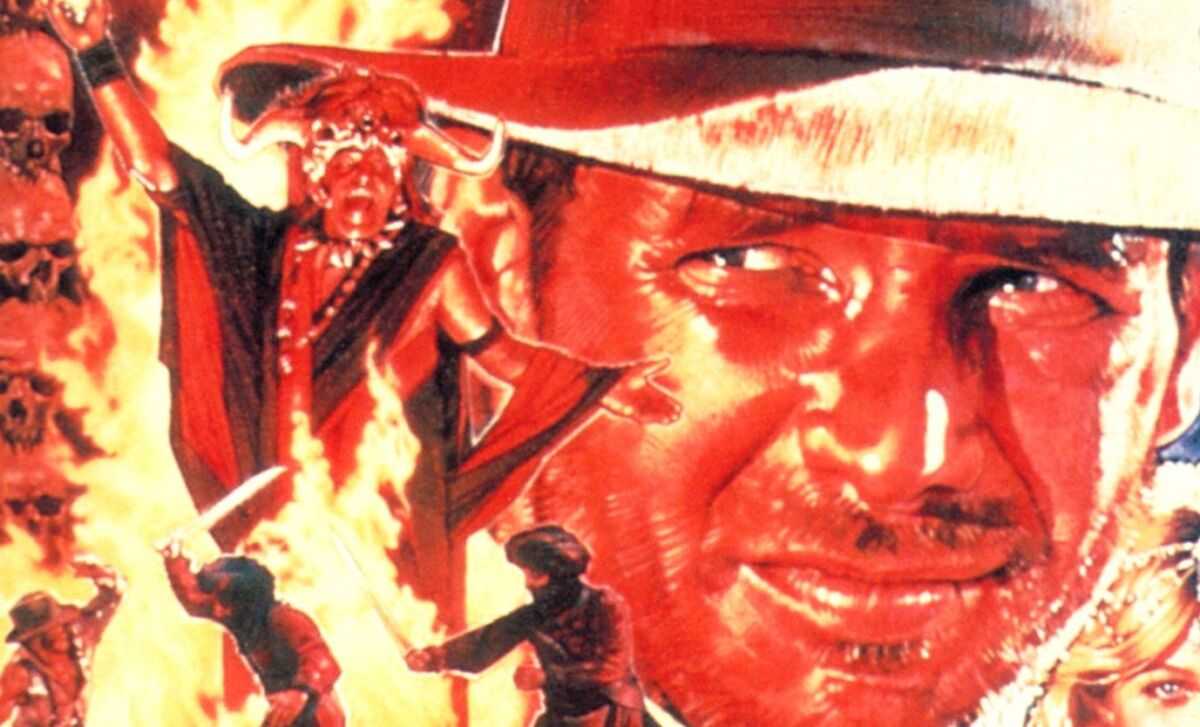
Developer: Atari Games
Publisher: Atari Games
Platform(s): Various
One of the more interesting entries into the Indiana Jones video game library is 1985’s arcade game, Indiana Jones and the Temple of Doom. The early 80s were a boom period for arcades, with classics such as Pac-Man, Space Invaders and Asteroids leading the charge into the turn of the decade. The 80s brought more complex and better looking games, and this would include Indiana Jones and the Temple of Doom, which had much more going on than its older arcade counterparts.
Indiana Jones and the Temple of Doom sees you taking on the role of Indy, as you rescue children trapped in the mines underneath Pankot Palace. Temple of Doom features an 8 direction joystick which can move Indy in all directions from an almost top-down perspective. Climb ladders, swing over gaps and avoid guards to progress to the next level. Later levels in the game feature the famous minecart chase from the movie, as well as liberating the sankara stone from the titular temple.
For the time, the game looked pretty sharp and featured some great adaptations of the movie’s music. The gameplay felt unlike any other game in the Indiana Jones series. It’s fun, but do bear in mind that it does have an arcade mentality, but not as bad as some coin guzzlers of the day. There was a version of this game for the NES, Commodore 64, Amstrad and a few other systems, but none of them were anything like the arcade original.
6. Indiana Jones and the Infernal Machine
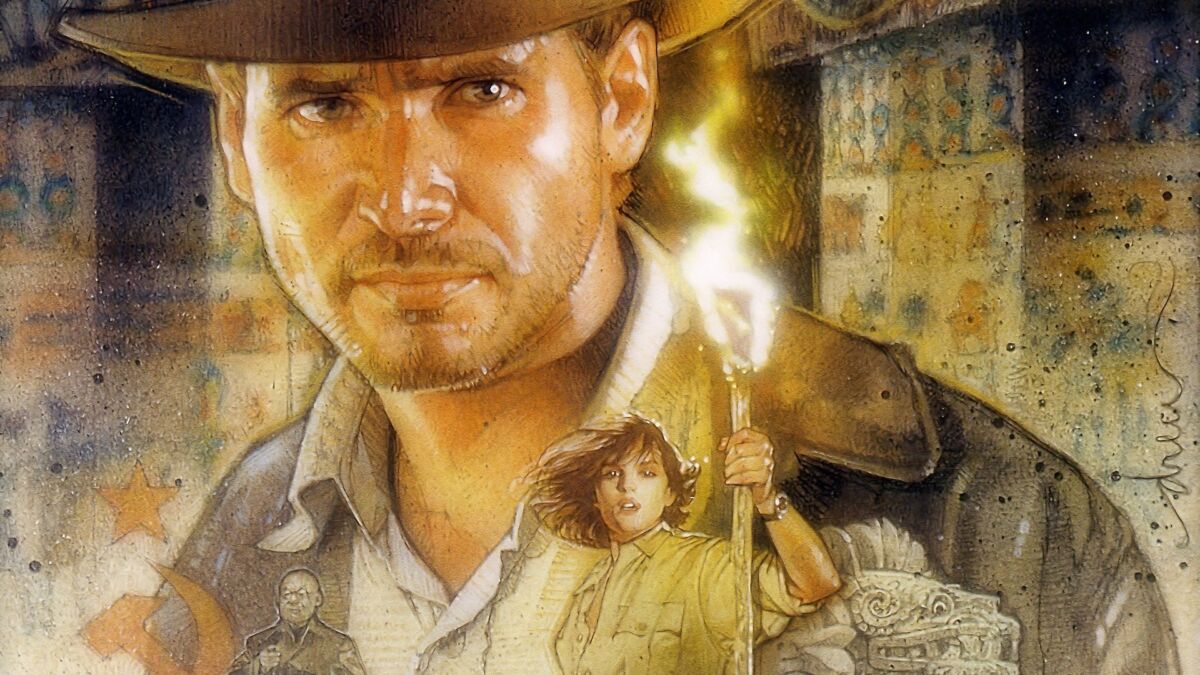
Developer: LucasArts, Factor 5
Publisher: LucasArts
Platform(s): PC, N64, GBC
In the late 90s, the new generation of 3D polygonal graphics was in full swing, with each new year bringing more and more impressive looking 3D games. This, and the simple fact that another globetrotting adventure series, Tomb Raider, was making huge waves in the console market, meant that Indiana Jones had to follow. This was the first 3D Indiana Jones, and we’d sadly wave goodbye to the 2D adventure and action games of the 90s.
Indiana Jones and the Infernal Machine does take a fair bit of inspiration from the Tomb Raider games, but given that Tomb Raider likewise took some inspiration from Indiana Jones, it’s only fair. There are certainly some Tomb Raider similarities here: block pushing/pulling is seemingly borrowed wholesale, vehicles feel not dissimilar, and even the ‘splash’ sound effect sounds familiar. The two game series are so alike that it was always going to be the case that they shared similarities, and luckily Indiana Jones and the Infernal Machine manages to feel different enough to not be a straight copy.
Indiana Jones and the Infernal Machine is all about exploring, fighting and puzzling your way around 3D environments, with the game split into several levels. The puzzle sections were cited as a particular highlight, although many reviews stated that Indy’s controls felt a little jerky.
The game saw respectable scores, with the PC version receiving an average of 73% on Metacritic. Bizarrely, Indiana Jones and the Infernal Machine only released for PC and N64 back in 1999 and 2000 respectively, and never received a wider release. This was most likely due to being a little too early for PS2, Xbox and Dreamcast, but a little late for the likes of the PlayStation and Sega Saturn.
5. Indiana Jones and the Emperor’s Tomb
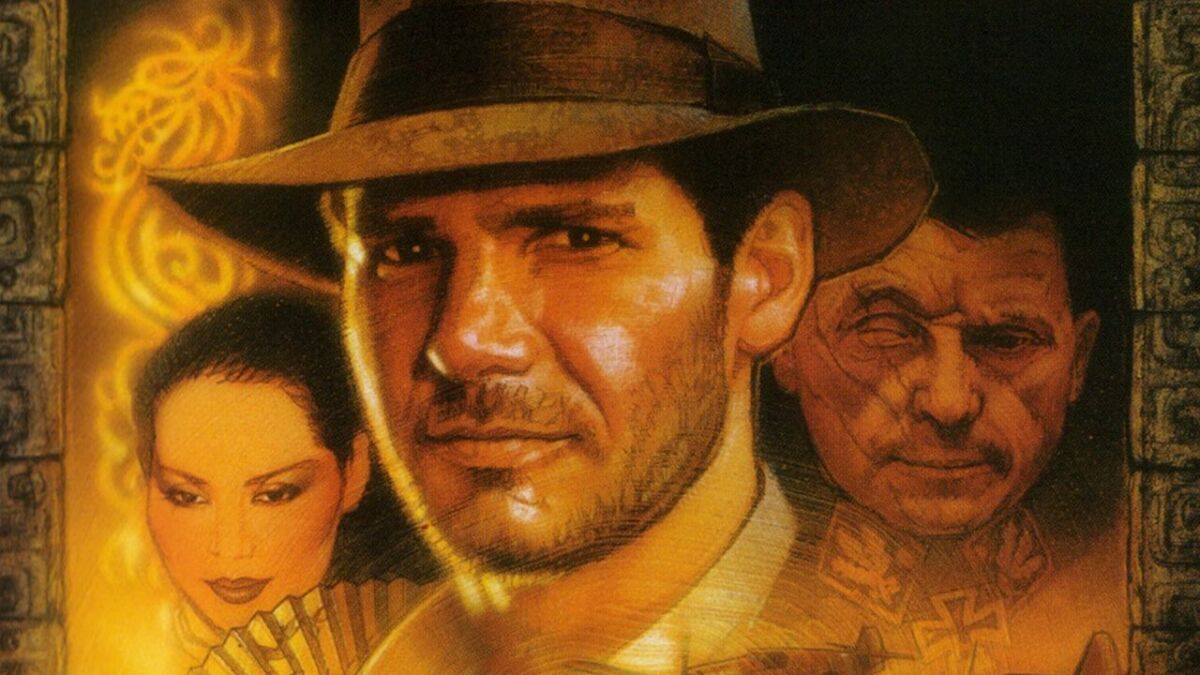
Developer: The Collective
Publisher: LucasArts
Platform(s): PC, PS2, Xbox
Infernal Machine didn’t have to wait long for a follow up, and that follow up would be 2003’s Indiana Jones and the Emperor’s Tomb. This time, Indy received a much wider release, hitting both Xbox and PS2, as well as versions on PC and Mac. Unlike its predecessor, Indiana Jones and the Emperor’s Tomb would not be developed by LucasArts directly, instead development duties were handled by The Collective, with LucasArts acting as publisher.
As you’d expect, Indiana Jones and the Emperor’s Tomb features gameplay not too dissimilar from its predecessor, with you taking on ten levels all located around the world that you have to whip/swing/punch yourself through. For this sequel, there’s less emphasis on puzzles and more on combat, with Indy now able to fight with improved weapons, such as chair and table legs from broken furniture. While it features the sort of issues many games of this era struggle with (hello, drunken camera), it does a great job of evoking the spirit of the movies.
Indiana Jones and the Emperor’s Tomb does a fantastic job of making you feel as though you are in an Indiana Jones movie and is an all around improvement over Infernal Machine. The only downside is that the console versions suffered from a few graphical glitches, which were not present in the PC version.
Despite these glitches, it’s still one of the best Indiana Jones games, as it nails down that spirit so well and it is the first game to truly make you feel like Indiana Jones.
4. Lego Indiana Jones: The Original Adventures
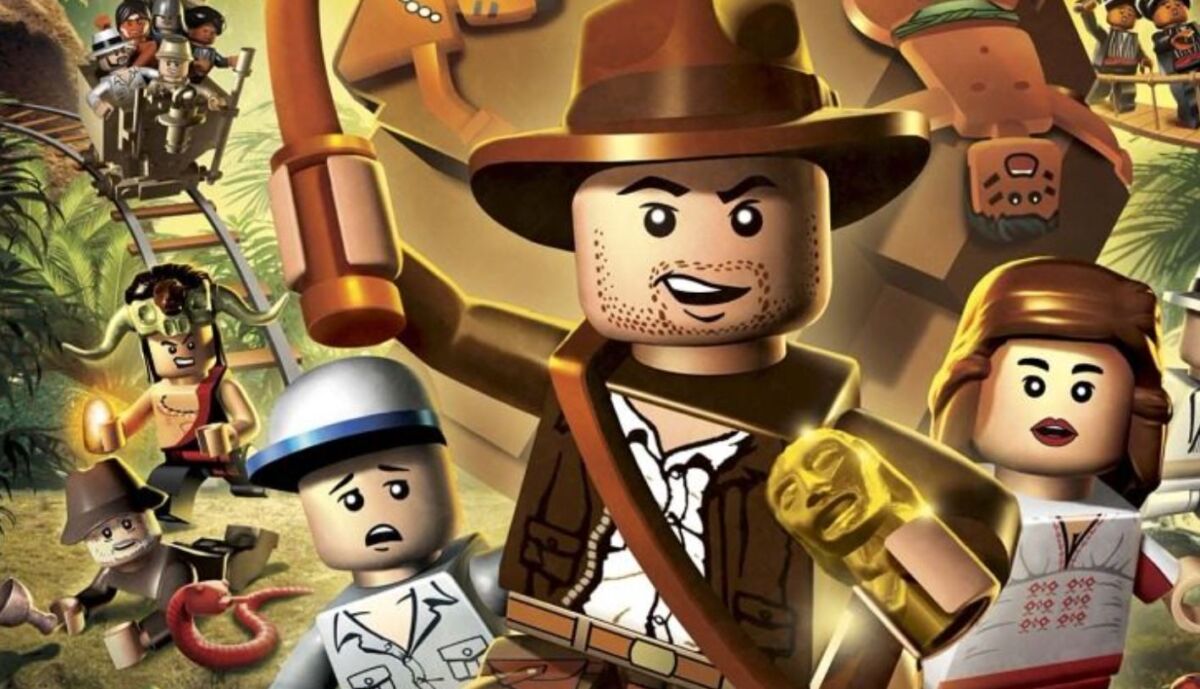
Developer: Traveller’s Tales
Publisher: LucasArts
Platform(s): PC, PS2, PS3, Xbox 360, Wii, DS, PSP
Love them or hate them, the Lego video game series is a serious juggernaut that seemingly cannot be stopped. After successfully adapting Star Wars to the Lego universe, it was only natural that its Lucasfilm stablemate should also receive the Lego treatment.
Developed by Travellers Tales, Lego Indiana Jones: The Original Adventures saw players playing as Indy and various other characters. It allowed players to battle, collect and build their way through the original trilogy.
If you’ve ever played a Lego game, then you’ll already know what to expect. Players take the role of one of the characters from the series and make their way through levels based on the original three movies, collecting Lego ‘bits’ and building items. There’s plenty of upgrades over Lego Star Wars here too, introducing drivable vehicles, grabbable weapons, and ‘phobias’, such as Indy being afraid of snakes. Playing through each level advances the story, as well as giving you opportunities to unlock new characters.
All the Lego games are super simple, with only a few buttons controlling the jumping, whipping and punching of the in-game characters, making the game easy to pick up and play. It also features couch co-op, a great addition which makes Lego Indiana Jones: The Original Adventures a fun experience with a friend. It was well received by critics and holds an average of 77 on Metacritic.
There was also Lego Indiana Jones 2: The Adventure Continues, but as it was far too similar to the previous entry, it didn’t warrant an entry on its own.
3. Indiana Jones and the Last Crusade: The Graphic Adventure
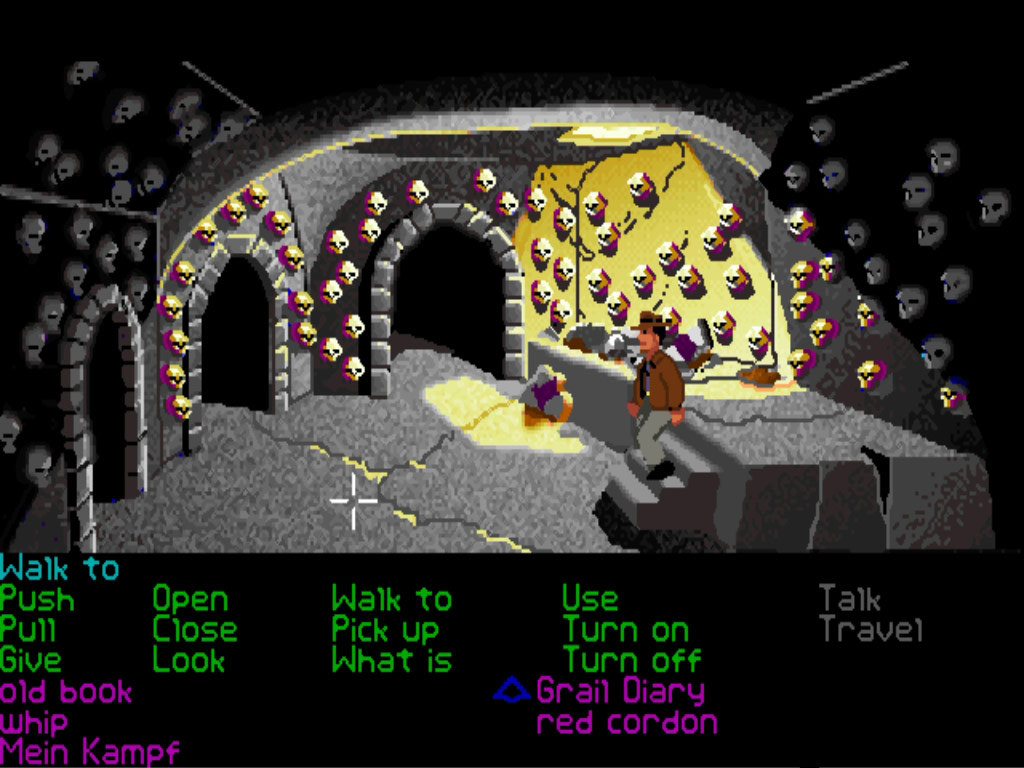
Developer: Lucasfilm Games
Publisher: Lucasfilm Games
Platform(s): PC, Amiga, Atari ST, Macintosh, FM Towns, CDTV
LucasArts was one of the biggest forces in point and click adventure gaming in the 1990s. It should be no surprise that some of these titles were Indiana Jones games, and the first of two ‘graphic adventure’ games came in the form of Indiana Jones and the Last Crusade: The Graphic Adventure. A companion game to Indiana Jones and the Last Crusade: The Action Game, it followed the story of the movie, but obviously without much combat or action scenes.
Like many early LucasArts adventure games, Indiana Jones and the Last Crusade: The Graphic Adventure featured a main window in which the player literally points and clicks on points of interest. A large lower panel features commands, such as ‘pick up’ or ‘walk to’, and each one does pretty much what it says on the tin. The game tells the plot of Indiana Jones and the Last Crusade pretty closely, including most of the major plot points, and while there isn’t much action, it still captures the adventure of the movie pretty well.
Indiana Jones and the Last Crusade: The Graphic Adventure was immensely well received on release, and at the time was one of the best graphic adventures on the market. It was also one of the first games to introduce dialogue trees, something which is fairly commonplace in today’s gaming world, but not back in 1989.
Indiana Jones and the Last Crusade: The Graphic Adventure laid the groundwork that later adventure games would follow, and was an inspiration for later games that would also include dialogue trees.
2. Indiana Jones’ Greatest Adventures

Developer: Factor 5, LucasArts
Publisher: LucasArts
Platform(s): SNES, Wii
LucasArts had immense success publishing the 2D platformer series Super Star Wars on the SNES from 1992 to 1994. Super Star Wars was developed by Sculptured Software, and the team created three separate games, one each for the Star Wars trilogy. With no more Star Wars movies to adapt, LucasArts took a different route: they decided to adapt the Indiana Jones trilogy into a SNES based, 2D platform game as well. Surprisingly, they didn’t spread the movies over three games, instead making the trilogy a standalone title called Indiana Jones’ Greatest Adventures in 1995.
This move was most likely due to the imminent release of the next generation of consoles, with the PlayStation and Saturn both releasing in late 1994. With the lifespan of the SNES limited, this made for a solid business move.
Developed by Factor 5, Indiana Jones’ Greatest Adventures followed a similar format to the Super Star Wars games, which were challenging 2D platformers. Indiana Jones’ Greatest Adventures also featured fantastic use of the SNES’ ‘Mode 7’, which simulated 3D graphics using pixels and allowed for different types of gameplay, such as flying a plane or riding a minecart.
Indiana Jones’ Greatest Adventures didn’t break any new ground in the platform genre, and it didn’t quite hit the same heights as Super Star Wars, however everything it did, it did amazingly well. Being a very late platformer to the console meant that Indiana Jones’ Greatest Adventures could learn from what worked and what didn’t of the Super Star Wars games.
Indiana Jones’ Greatest Adventures is an incredibly hard game, so if you want to try it today, prepare to die a lot, but that doesn’t take away from the experience, as it’s not only one of the best Indiana Jones games, but one of the SNES’ best platformers full stop.
1. Indiana Jones and the Fate of Atlantis

Developer: LucasArts
Publisher: LucasArts
Platform(s): PC, Wii
Finally, we’ve come back to Atlantis. It’s not that Indiana Jones and the Fate of Atlantis: The Action Game is a bad game, it’s very good, but frankly the graphic adventure version is an outstanding one.
LucasArts’ final Indiana Jones graphic adventure game was one of their best yet, and it’s easy to see why. Firstly, there has been great leaps in graphics in the few years between Indiana Jones and the Last Crusade: The Graphic Adventure and Indiana Jones and the Fate of Atlantis, and most importantly, Fate of Atlantis was an original story, and it wasn’t shackled to the plot of a preexisting movie.
Indiana Jones and the Fate of Atlantis is very similar to Indiana Jones and the Last Crusade: The Graphic Adventure, but there are tweaks that help tighten up the experience. While control methods are the same (keywords located in a menu on the lower edge of the screen), the UI has definitely had an improvement. Gone are the barebones MS-DOS style commands list and it’s been replaced with a clear, well designed menu.
Graphically speaking, Indiana Jones and the Fate of Atlantis had what now might be seen as a minor overhaul compared to its predecessor, but it was a major leap at the time. Advances in technologies meant more colours could be used, and environments, items and characters all looked much cleaner than their Last Crusade counterparts.
One major advantage for Indiana Jones and the Fate of Atlantis was a fully voiced script. Fate of Atlantis was initially released in 1992 on floppy disk, and much like The Last Crusade, featured text-only conversations. Indiana Jones and the Fate of Atlantis was re-released a year on from its debut on a rather new format called CD-Rom, which allowed LucasArts to fully voice the game, something they’d continue to do so in future point and click games.
As mentioned before, the best thing about Indiana Jones and the Fate of Atlantis is a totally original story, as it doesn’t have to fall into any of the trappings that aren’t really suitable for a point and click adventure. Where Indiana Jones and The Last Crusade had to work around major action scenes, Indiana Jones and the Fate of Atlantis doesn’t need to do this, and can focus on the mystery and investigative aspects of the series.
Indiana Jones and the Fate of Atlantis is the best Indiana Jones game of all time, and is also seen as one of the best point and click games ever made. A true classic.
READ NEXT: Ranking the Evil Dead Games From Worst To Best
Some of the coverage you find on Cultured Vultures contains affiliate links, which provide us with small commissions based on purchases made from visiting our site.

